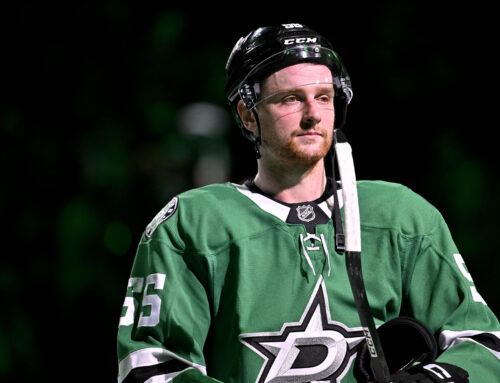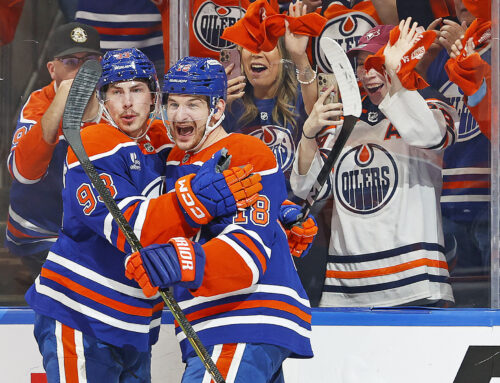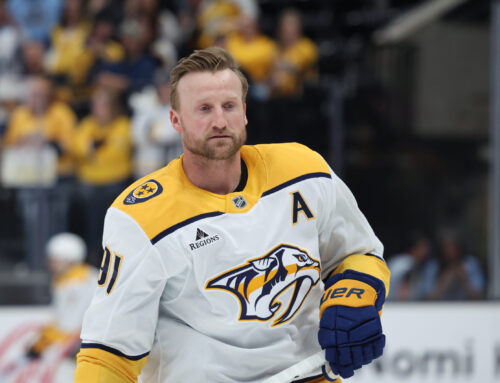
The offseason fantasy hockey analysis of the San Jose Sharks and Colorado Avalanche
San Jose
San Jose underwent a 'rebuild' of sorts before this season, which amounted to the ineffectual alienation of its two star veterans and the depletion of the bottom six. The results were pretty much what should have been expected; fewer goals, fewer wins and the playoffs missed. This took Sharks from a dominating possession team that outshot its opponents by an average of seven shots each game to a middle of the pack team. With the lesser bottom six they took three fewer shots per game and gave up two extra shots per game, resulting in an extra 35 goals against. They would have scored a lot less if their power play had not picked up the slack, as they became one of the best power plays in the league clicking at a 21.6% clip.
The Avs came down very hard from the Cinderella story that was the 2013/14 season. The shooting percentage darlings from last year scored on a full percentage point less of their shots, while taking a shot and a half less per game, resulting in 40 fewer goals on the season. Furthermore, the Avs' power play fell from an efficient 19.8% to a bottom five 15% during this season. The combined fewer shots and lower shooting percentage took Colorado from the fourth best offense in the league to the 22nd best offense. This goes to show how perilous it is to base an offense on a high shooting percentage. Since the 2009/10 season only one team, Tampa, has managed a shooting percentage over 10% in consecutive seasons, and the second of those seasons was the strike shortened 2012/13 season.
The player that best exemplifies the Avalanche fall from 2013/14 to this season is Nathan Mackinnon. By every metric except for his production Mackinnon was better last year than he was in his rookie season. The Avs had the puck more when he was on the ice and he averaged three shots per game. The problem for Mackinnon is that his shooting percentage fell from 10% to 7.3% and his on-ice shooting percentage fell by a similar amount. Lest anyone think that this dip was because of the Avs' sad sack power play, it was Mackinnon's even strength shooting percentage falling to just over 6% that really hurt him. While Mackinnon's 2013-14 shooting percentage was absurdly high, this does exemplify what a fickle mistress shooting percentage can be.
Are we sure Jarome Iginla is not the bionic man? How else is he still basically scoring 30 goals every year at age 38? In a year when the Avs had their team shooting percentage drop by a point Iginla scored on over 15% of his shots, a level he nearly reached the year before as well. If there is a reason to be weary about Iginla continuing to score 30 every year it his falling shot rate. It fell from three per game through the lockout season to just over 2.25 shots per game this past season after dipping under three shots in 2013/14. As one of the game's historically great power forwards he makes a great role model for burgeoning power forward Gabriel Landeskog. While Landeskog does not look like the prolific goal scorer that Iginla has been he does play a similar all round game. Landeskog contributes in most categories but does not do anything exceptionally. If Landeskog ever shoots at the same rate he did in his rookie season he could hit 30 goals regularly until then he will continue to plateau at 60 points unless the Avs all get hot sticks again.
Speaking of hot sticks do not fret much about Tanguay's insanely high shooting percentage, he is regularly over 15%. It is more a factor of his selective shooting as opposed to a lucky season.
The Avs top two centers are a study in contrast. Ryan O'Reilly is perpetually rumoured to be on his way out of town and probably better in real life than he is in fantasy hockey, whereas Matt Duchene seems more firmly in the fold and has shown flashes of some elite level point production. Duchene's struggles this season are largely due to the Avs' struggling power play where he shot under 6% and the team shot 7.5%. That suggests that Duchene should be expected to bounce back closer to his 2013/14 numbers. O'Reilly on the other hand posted career high shooting percentages both at even strength and overall in 2013/14. While he did struggle this season on the power play they were not nearly as pronounced as Duchene's. O'Reilly will probably bounce back but probably tops out at 60.
On defense the Avs are a two note song with Erik Johnson and Tyson Barrie. Barrie benefitted from Johnson's injury as Roy no longer had a second option on the Avs power play. Barrie should be considered the real deal in Colorado, if he does not hit 50 every year he is healthy he will be perilously close. Johnson is the more interesting player as he finally seems to be reaching something near the potential everyone saw in his draft year. The problem for Johnson is that he is heavily relied upon as the defensive backbone on this shallow Avs defense corps. With Jan Hejda being his usual ineffective self on offense, Brad Stuart's rotting corpse and Zach Redmond falling short this season, Stefan Elliott may have his best shot of sounding a third note on the Avs defense next season. He is coming off his best season in the AHL after putting up 40 points in 64 games, while averaging close to three shots per game. Even his -9 plus/minus does not seem all that bad on a team where the high was a +3.
UFA: Daniel Briere, Jan Hejda, Ryan Wilson,
RFA: Joey Hishon, Jordan Caron, Freddie Hamilton, Stefan Elliott





 FLA
FLA EDM
EDM OTT
OTT NYR
NYR CHI
CHI BUF
BUF WSH
WSH CAR
CAR TOR
TOR
